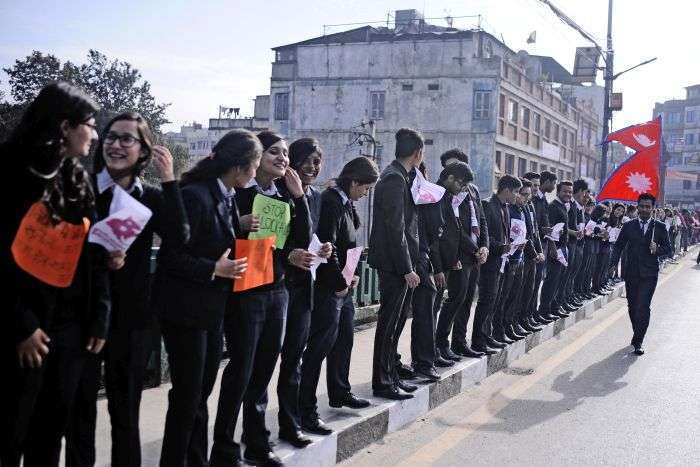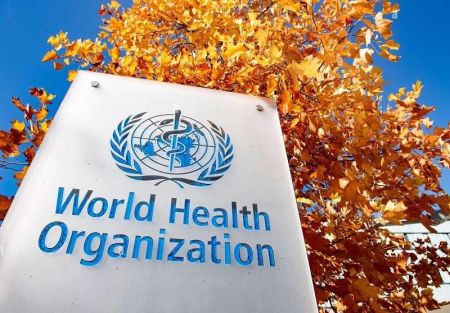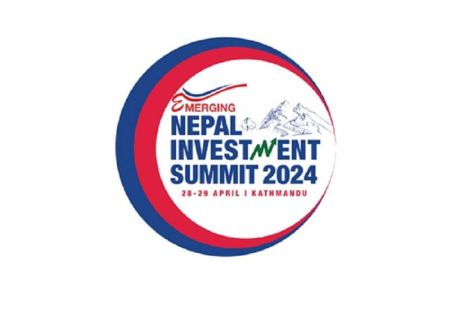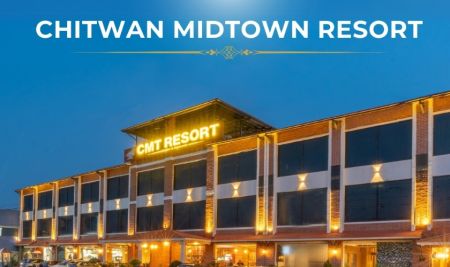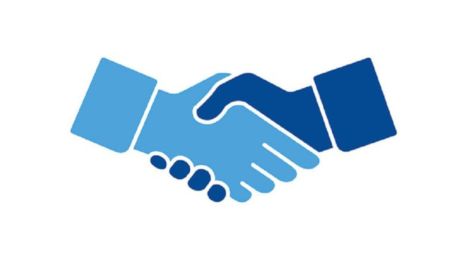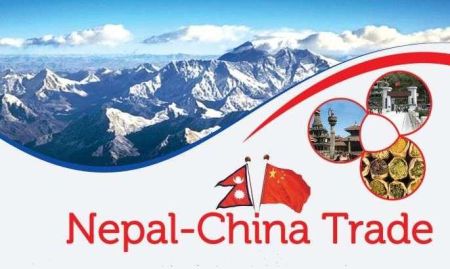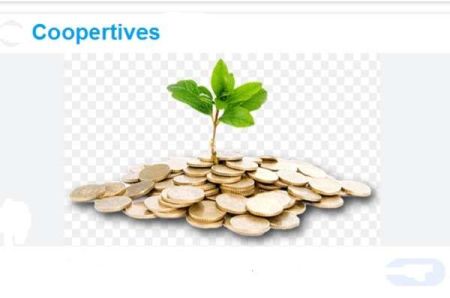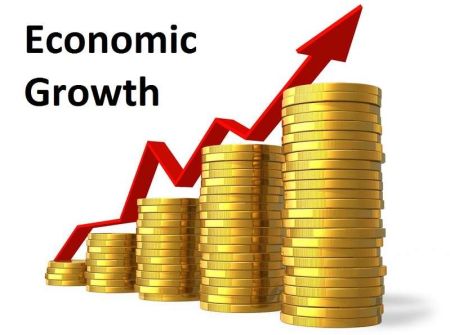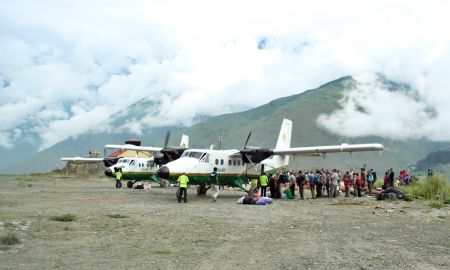This file photo shows a human chain formed to protest the unofficial blockade imposed by India on Nepal in 2015. Photo: NBA Files
Birat Anupam
September 22: September 23 marks the sixth anniversary of 6-month-long Indian embargo starting from September 23, 2015. Indian blockades are not a new phenomenon in Nepal's living and institutional memories. If history is any indication, Nepal is prone to periodic Indian blockade just because of its land-locked nature and mainly due to India-dependent trade and transit status.
Nepal faced Indian blockade in 1962, 1971, 1989 and 2015. The military blockade of 2005 is also mentionable. However, this blockade was mainly on military fronts where India ceased its treaty-driven mandatory military supplies to Nepal Army, which was officially called Royal Nepalese Army during those days.
However, the Indian trade embargo of 2015 is different from all other periodic Indian embargoes. Here are the reasons.
Trade embargo against the promulgation of Nepal's constitution
For the first time in the Nepal's history of seven written constitutions, the Constitution of 2015 was the only one written by people’s representatives. The 601-member Constituent Assembly was sovereign to draft and promulgate Nepal's constitution. CA promulgated the historic constitution on 20 September 2015.
Indian Foreign Secretary Subrahmanyam Jaishankar, now the Indian Foreign Minister, landed in Kathmandu on 18 September to persuade Nepal's leaders to delay constitution promulgation and include Indian inputs, Nepali leaders denied and promulgated the charter on the stated date of 20 September by overwhelmingly two-thirds majority of the Constituent Assembly.
Sushil Koirala, the then PM, led this historic constitutional consensus among Nepal's major political players to promulgate Nepal's historic constitution. In a recently unveiled political document in his party meeting, Chair of CPN (UML) and former PM KP sharma Oli said Jaishankar 'threatened' Nepali leaders to delay the constitution.
It did not take more than three days for Nepal to feel the Indian trade embargo. India, however, while reacting on the newly promulgated constitution of 2015, had hinted on possible embargo. It had issued an official statement that cautioned, ''We are concerned that the situation in several parts of the country bordering India continues to be violent.'' True to the cautionary call, India imposed trade embargo on Nepal. India said the protesters along India-Nepal borders were the reason for the cross-border trade and transport disruption. The fact was that even those peaceful border crossings like Kakarbhitta did not see much imports compared to normal days. Only occasional nonessential stuffs were allowed to enter via regulated peaceful border crossings.
First Indian embargo in non-monarchial era
All previous Indian embargoes imposed on Nepal happened during active monarchial system. For example, when Jawaharlal Nehru imposed embargo on Nepal in 1962 during the reign of King Mahendra. Nehru's daughter Indira Gandhi did the same in 1971 when the same King was ruling Nepal. In 1989, Indian PM was Rajeev Gandhi, the son of Indira Gandhi, and Nepal's King was Birendra. Likewise, in 2005 military embargo, Nepal's last King Gyanendra was directly ruling Nepal. The embargo of 2015 is the only economic blockade where there was no king at the helm of Nepal.
No Chinese factor associated during embargo
In almost all embargoes in Nepal, Indian establishment has pinpointed Chinese factor for its action. For example, in 1962, India was 'not happy' as Nepal and China were working to construct Araniko Highway connecting Nepal's capital Kathmandu and China's autonomous province of Tibet. In 1971, Nepal removed India's wireless operator from Nepal's northern borders with China. In 1989, Nepal imported anti-aircraft guns from China. Even in 2005 military embargo against the then King Gyanendra's direct rule, the king was largely portrayed as pro-China by Indian establishment.
Dawn of Nepal's opening up with China in terms of TTA
Despite having direct roadways connecting Nepal and China since 1967, Nepal never inked any Transit Trade Agreement (TTA). Interestingly, after Indian embargo of 2015, Nepal inked TTA with China with legal access to seven sea and dry ports of China. This was inked during state visit of KP Sharma Oli on 21 March 2016. Oli and his Chinese counterpart Li Keqiang inked the deal.
The TTA protocol was also signed during second tenure of KP Oli's premiership on 29 April 2019 during the state visit of Nepal's President Bidya Devi Bhandari to China in presence of her Chinese counterpart Xi Jinping. Nepal's Foreign Minister Pradeep Kumar Gyawali and China's Transport Minister Li Xiaopeng. TTA gave Nepal alternative avenues for its international trade and transit via Chinese seas and ports. This will help, say observers and experts, cope up possible Indian embargos in the future.
India stood supportive after 2015 blockade for trade and transit
Indian officials essentially denied embargo on Nepal. However, at Rajya Sabha debate, Indian MPs pressed then External Affairs Minister Sushma Swaraj about embargo on Nepal. In that debate, on 7 December 2015, Swaraj indirectly confessed Indian embargo. She said, ''Even in times of Rajeev Gandhi, there was embargo on Nepal.''
On positivity, India changed its track for better after 2015 embargo; it was ready to let Nepal use additional Indian ports. Previously, Nepal used to import/export via Haldia port of Kolkata only. After Oli's six-day state visit to India from February 19 to 24 of 2016, India agreed to give Nepal an access to the Visakhapatnam port of Andhra Pradesh of India. The business from that port began since October that year.
It speeded construction of 69-kilometer-long petroleum pipeline from Bihar to Nepal's Amlekhganj. A total of 36-kilometer portion of this pipeline falls within Nepal. Nepal's PM Oli and his Indian counterpart Narendra Modi virtually inaugurated this on 10 September 2019.
(This article is a special feature prepared by the state-owned national news agency RSS on sixth anniversary of India-imposed blockade)


